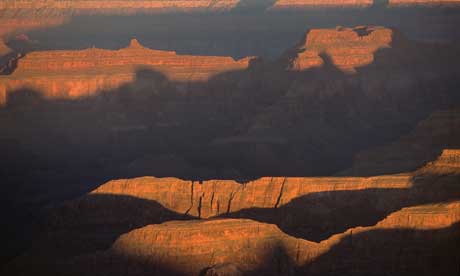
It's all about perspective, says Steve Davey. Abandon the stereotypes and think past the predictable angles and compositions
In 2008 the Wanderlust Travel Photo of the Year competition launched a new category for you budding snappers: Travel Icons. Over the previous 12 years of the competition you had sent in your photos covering people, street life, wildlife, landscapes and festivals – but until now we have never included a separate category for those things and places that people seem to photograph the most: the world’s great travel icons.
To me the great travel icons are the classic sites that you simply can’t miss. They’re the places that appear on the covers of the brochures – the ones that make you itch to visit a country: Angkor Wat, the Taj Mahal, the Pyramids of Giza, St Mark’s Cathedral, Machu Picchu. And they don’t just have to be manmade architectural monuments; natural wonders such as Uluru, Kilimanjaro and the Grand Canyon are just as iconic.
Equally, travel icons don’t always have to be the big sites. Think of those classic, ephemeral images that immediately sum up a place: a dromedary at the Pushkar Camel Fair or a British bobby in front of a red phone box in London. You might even interpret this to mean a single object – a Venetian gondola or a rickshaw in Asia.
In some ways you could call this the travel cliché section, but don’t take this as a carte blanche invitation to send in clichéd images. Even though the subject may have been photographed countless times before, we are looking for something new and exciting. Photographing a travel icon in such a way that the image stands out from a sea of predictable, average shots isn’t easy. It takes creativity, originality and a lot of thought.
Always look for a new angle – the old familiar angles can be found on every postcard stand across the globe from Aalborg to Zwickau! Try to think differently: get up high (climb a neighbouring building or hill) and view your subject from a distance with a long lens, or try a low angle with something interesting in the foreground. If you are prepared to hang out of a plane, then why not think about an aerial shot? There will always be a slightly different side to some of the great travel icons: the Pyramids could be photographed from the Hilton golf course, St Mark’s through a window of the Caffé Florian, or the Taj from the far bank of the river.
It’s usually the light that makes a picture stand out from the crowd. You might be incredibly lucky with the light, but remember: more often than not, you make your own luck. If you stay in bed, gorge yourself on the breakfast buffet and then slouch to the Pyramids at midday, the light will be brash and uninteresting. If you get there for sunrise the light might still be bad, but go back again the same time the next day – it might be better. You might even be fortunate and get a stunning sunrise cutting through a misty morning. This is how professional photographers manage to capture all those evocative images that you see on magazine pages. There is no trickery – just a lot of hard work, perseverance and early mornings.
Contrary to popular belief, bad weather can actually help make your pictures special. I’m not talking about those dull, overcast days where the sky is a uniform dove grey and the light is flat, but those moments when the weather is dramatic and brooding.
Shoot the Taj Mahal covered by black thunderclouds, spotlit with a shaft of sun coming through the gloom and you will have a world-class image. Similarly, Machu Picchu wreathed in fog, or Angkor Wat barely visible in a monsoon with a monk sheltering under an umbrella in the foreground could be something unique – so don’t just head for the hotel bar when it starts to rain.
Another way to make your pictures stand out is to combine the icon with a person or object. I’m not talking about simply forcing a passing local or grubby urchin to grin gormlessly into the lens, but something more sensitive and creative. If you are photographing a person, then try to make them look as though they just happen to be there – not that you have cajoled them into position.
On that subject, can I make a personal request? Please, no more pictures of that annoying boy and his camel who hang out on the far bank of the Yamuna River opposite the Taj Mahal. And especially not the guys who plant a kiss on their camels in front of the Pyramids for a few Egyptian pounds. We are looking for pictures that are effortless and original, not the contrived results of bartered cash exchanges with professional models!
Even if we have never been to these places, most of us can conjure up images in our heads of travel icons from around the world, such is the bewildering quantity of images that we see in magazines, on TV and in advertising campaigns. Just remember that we are not looking for the instantly visually familiar yet ultimately disposable images that have slipped into all of our collective conscious – we are looking for something utterly unforgettable.